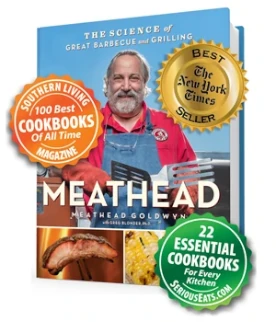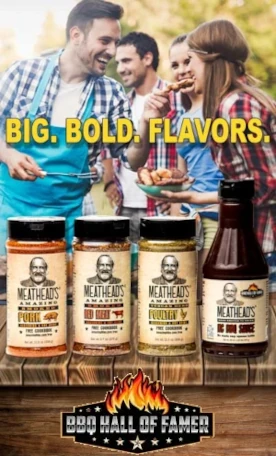Very nice looking pastrami !
Announcement
Collapse
No announcement yet.
Arm Roast Pastrami
Collapse
X
-
From the blog post at your link: "...I always cure using an equilibrium cure. I use between 2.5% and 3.5% of the meats weight in salt, rub it all over the meat, and put the meat in a sealed bag, flipping it every 3-5 days in the refrigerator to make sure the chunk is always exposed to the brine that is formed by the salt pulling out water from the muscle...."Originally posted by Potkettleblack View Post...I do an equilibrium brine...
I can see why this "equilibrium brine" method is appealing, and I totally understand (being a chemical engineer) why one would want to do this. But the author is dismissive of the "excess salt" method, saying he can't see why one would bother with it. I would argue it's all about tradeoffs -- neither method is inherently better than the other.
As the salt is absorbed by the meat, the salt concentration in the brine drops. The closer it gets to equilibrium, the slower the rate of reaction. The excess salt method gets the job done quicker with more chance of over salting or the need to desalinate. The equilibrium brine method gets the job done slower but with less chance of over salting.
Per Dr Blonder's calculator based on the excess salt method, I used 8 ounces of salt and brined the meat for about 8 days. Using the equilibrium method at 3% of starting raw meat weight, I would have used about 1.5 ounces of salt and would have brined the meat for 2-3 weeks per the blog author.
Comment
-
Club Member
- May 2016
- 5689
- Huntington Beach, Ca. Surf City USA.
-
Equipment
Primo Oval xl
Slow n Sear (two)
Drip n Griddle
22" Weber Kettle
26" Weber Kettle one touch
Blackstone 36†Pro Series
Sous vide machine
Kitchen Aid
Meat grinder
sausage stuffer
5 Crock Pots
Akootrimonts
Two chimneys (was 3 but rivets finally popped, down to 1)
cast iron pans,
Dutch ovens
Signals 4 probe, thermapens, chef alarms, Dots, thermapop and maverick T-732, RTC-600, pro needle and various pocket instareads.
The help and preferences
1 extra fridge and a deep chest freezer in the garage
KBB
FOGO
A 9 year old princess foster child
Patience and old patio furniture
"Baby Girl" The cat
Erik S.
holehogg Because I cook for Banquets I’m often making large cuts for carving station and a lot of meat in general. We are often fighting for oven space, timing and other logistics which have require me to cook and hold then heat.
I find that large (whole rib roasts etc) meat take well to a sear and blast chill/refrigeration then a heat up and long hold.
I think it’s the same thing that makes it dangerous. The inside cooks while the outside is cooling. I don’t type that well to explain all of that.
i think the cooling is better than the sitting on the speed rack in my opinion.
i often sear the day before the waygu sliders. Fantastic! The chicken does well as it’s a pet peeve of mine. No rubber chicken in our shop. Tenderloins too. The beef generally has no grey ay all and is wall to wall uniform. That’s a little harder on the tenderloin. I think maybe more fat sticks around and the meat don’t take a beating.
This held for 4 hours at 160 after being seared, chilled, cooked through, held and chilled again overnight. This is the leftovers I was making sandwiches with. Barely starting to show grey on the edge.
There is nothing wrong with searing, holding and cooking through and holding unless your food can’t take it.
Comment
-
Yeah, you'd need at least like enough SV to process 75 lbs of meat for 150 covers. that's what, 5 good circulators and large containers for them? But yes, it's a revolution in a tradition bound setting... not entirely unlike Sous Vide Que. ;-)
-
Potkettleblack also you would need bags and machines large enough to vac seal whole rib roasts. Clients pay to have the large hunk on display and sliced "live." You nailed the tradition though. Also the space to store and hold the meats. It’s happening though. We SV a lot of things like kumquats, eggs, fermented Fresno’s (which I served for Batali, my one claim to fame) and we have 4 lab style circulators and 4 joules. Artichokes are good that way too!
- 1 like
Announcement
Collapse
No announcement yet.








Comment